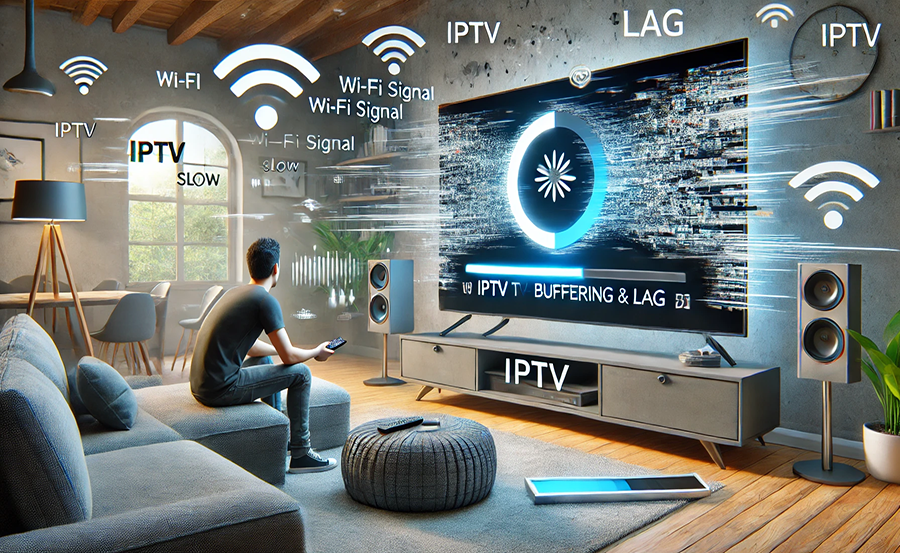In today’s digital age, streaming has become an integral part of how we consume media. With the popularity of IPTV services soaring, having a seamless streaming experience is crucial. However, issues with routers can disrupt this experience, especially when using popular devices like Apple TV. This article explores practical solutions to router-related problems affecting IPTV streaming and highlights how iFlex IPTV, as the world’s best IPTV subscription provider, can enhance your viewing experience.
Buy 1 Year IPTV Subscription and Enjoy Unlimited Content
Understanding the Basics of IPTV and Apple TV
IPTV, short for Internet Protocol Television, is a service that delivers television content over IP networks. Unlike traditional cable or satellite, IPTV uses a packet-switched network like the internet. This modern approach offers greater flexibility and convenience for users, allowing access to a plethora of channels from around the globe.
Apple TV, on the other hand, is a streaming device developed by Apple Inc. It serves as a gateway, connecting users to a wide range of digital content, including apps, games, and of course, IPTV services. Understanding these basics helps in diagnosing and fixing streaming issues effectively.
Why router settings matter
Your router plays a pivotal role in the quality of your IPTV streaming. It’s not just about having high-speed internet; the settings within your router can significantly impact your streaming experience. Incorrect configurations can lead to buffering, latency, and poor video quality on your Apple TV.
Identifying Common Router Issues
Identifying the root cause of streaming problems can save you time and frustration. Sometimes, the issue lies within your router’s settings. Others involve more complex networking mishaps. Here are some common router-related streaming issues you might face:
Bandwidth bottlenecks
Many users experience streaming lags due to bandwidth bottlenecks. These occur when multiple devices compete for the same internet connection, overwhelming your router’s capabilities. Ensuring your router can handle the required bandwidth is essential for smooth IPTV streaming with iFlex IPTV.
Interference from other devices
Routers transmit signals on specific frequencies, usually in the 2.4GHz or 5GHz bands. Other devices, such as microwaves or cordless phones, can interfere with these signals, leading to a degraded streaming experience. Adjusting the channel settings on your router can help mitigate this issue.
Incorrect router placement
A router’s placement can dramatically affect its performance. If your router is placed in a closed space or far from your Apple TV, signal strength may weaken, resulting in poor IPTV streaming quality. It’s recommended to position your router in a central, open location to maximize coverage.
Optimal Router Settings for IPTV Streaming
Configuring your router correctly can transform your viewing experience. To achieve the best results with iFlex IPTV, consider the following settings:
Updating firmware
Router manufacturers regularly update firmware to fix bugs and enhance performance. Keeping your router’s firmware up to date is an essential step in ensuring optimal performance. Most routers have a straightforward update process accessible via their management dashboard.
Quality of Service (QoS)
QoS settings prioritize bandwidth for specific applications, such as IPTV streaming. By enabling QoS, you ensure that your Apple TV receives sufficient bandwidth, reducing the likelihood of buffering or lag during peak times.
Channel selection
Choosing the right channel can reduce interference and improve signal strength. Many modern routers offer an automatic channel selection feature, which automatically picks the best channel to minimize interference. Alternatively, manually selecting a less congested channel can also be effective.
Advanced Solutions for Persistent Issues
Sometimes, basic adjustments aren’t enough. Advanced solutions can provide deeper fixes for persistent IPTV streaming issues.
Dual-band routers
If you haven’t already, consider upgrading to a dual-band router. These routers offer both 2.4GHz and 5GHz frequencies, allowing you to spread your internet traffic across two bands and reduce congestion.
Using a wired connection
For the most reliable connection, consider using an Ethernet cable to connect your Apple TV directly to your router. Wired connections eliminate the interference and lost signal issues often associated with wireless setups, improving IPTV streaming performance.
Why Choose iFlex IPTV? A Connection Boost
When your router settings are optimized, pairing them with iFlex IPTV ensures an unparalleled streaming experience. iFlex IPTV is renowned for its high-quality service and extensive channel list, making it the best IPTV service provider worldwide.
Exceptional service quality
With iFlexIPTV, users gain access to a plethora of channels with minimal buffering and high-definition quality. The service is reliable, ensuring that issues like video lag and interruption are kept at bay.
User-friendly interface
The intuitive interface of iFlexIPTV simplifies navigation, making it easy even for non-tech-savvy individuals to enjoy their favorite content. This seamless experience is part of what makes iFlex IPTV the preferred choice for many users globally.
A Few Last Words on Streamlining Your Smart Viewing Experience
Tweaking the right aspects of your network setup doesn’t just save you tons of frustration—it transforms your viewing experience. By understanding and managing your router settings while leveraging the exceptional offerings of iFlex IPTVP, your streaming will be smooth, allowing you to enjoy endless entertainment on your Apple TV without hindrance.
Frequently Asked Questions (FAQ)

1. How can I reduce buffering on my Apple TV while using IPTV?
To minimize buffering, ensure your router’s firmware is updated, optimize QoS settings, and consider using a wired connection for a more stable streaming experience.
2. Does router placement affect IPTV streaming performance?
Yes, correct placement of your router is vital. Placing it in a central, open location can help ensure better coverage and a stronger signal.
3. Why is iFlex IPTV the best choice for IPTV streaming?
iFlex IPTV offers a vast selection of channels, high-quality streaming, and a user-friendly interface, which collectively enhance the overall viewing experience. Its reliability and excellent customer support make it a superior choice.
4. Can QoS settings really improve my IPTV experience?
Absolutely. By prioritizing bandwidth for IPTV on your Apple TV, QoS settings can reduce lag and buffering, ensuring a smoother streaming experience.
5. What’s the difference between 2.4GHz and 5GHz bands?
The 2.4GHz band offers a wider coverage area but is more susceptible to interference. The 5GHz band provides faster speeds and is less crowded, making it ideal for high-definition streaming.
Sorting IPTV Lag with Effective Wi-Fi Solutionsa

